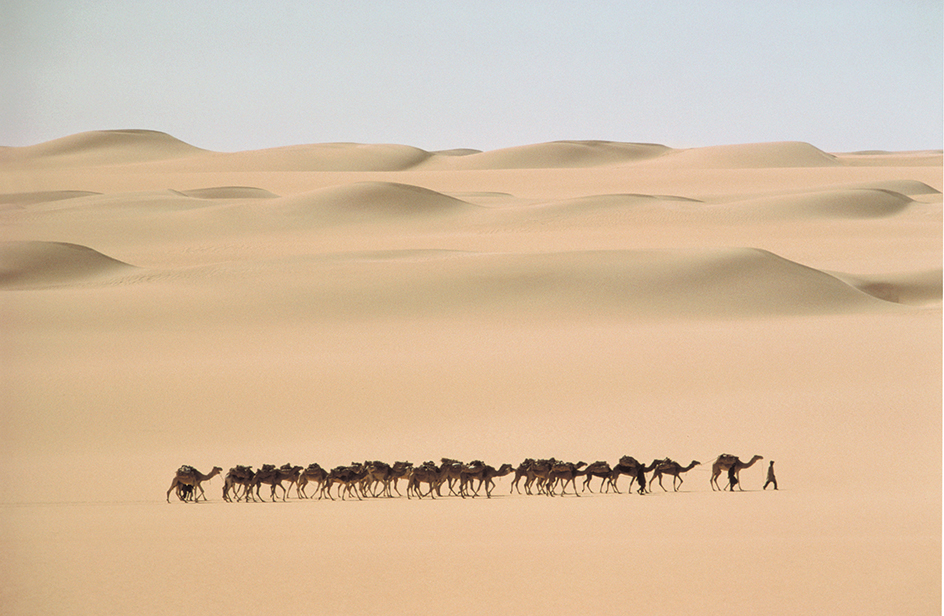Tuareg, << TWAH rehg, >> are the pastoral nomads who inhabit the central Sahara in northern Africa. Exact Tuareg population figures are difficult to determine. Most scholars estimate the population to be between 1 and 3 million people. They live mainly in Niger, Mali, Algeria, and Libya. They call themselves Imajaghan << ih MAH jah gahn >>, which means “the people who speak Temajaq,” referring to their language. Like the related Berbers, Tuaregs descend from the Indigenous (native) peoples of North Africa west of the Nile River (see Berbers). They are moderate Sunni Muslims.

Tuaregs controlled the ancient caravan trade routes across the Sahara and founded Timbuktu and other cities. They were called the “Blue Men” because their indigo-dyed clothing leaves a blue color on their skin. Men drape their turban across their face so that only their eyes are visible. The women do not veil their faces.
Tuaregs raise camels, sheep, goats, and cattle. Everyone in a family can own herds, but women own the family tents. Several related families form a camping group. During the dry season, from October to July, groups stay near family-owned wells. From July to September, during the rainy season, Tuaregs migrate long distances to find pasture for their livestock. Men herd the camels, while women and children tend the goats and sheep. About 100 or more camping groups compose a tribe. Several tribes form a confederation under a chief. Some Tuaregs have settled in villages.
European countries that colonized Africa from the late 1800’s created several colonies across Tuareg territory. This prevented Tuaregs from making their long-distance migrations with their herds. Droughts in the late 1900’s destroyed many Tuareg herds. Today, Tuaregs are working to gain greater recognition of their social, economic, and cultural rights within the nations that govern their traditional homelands.
